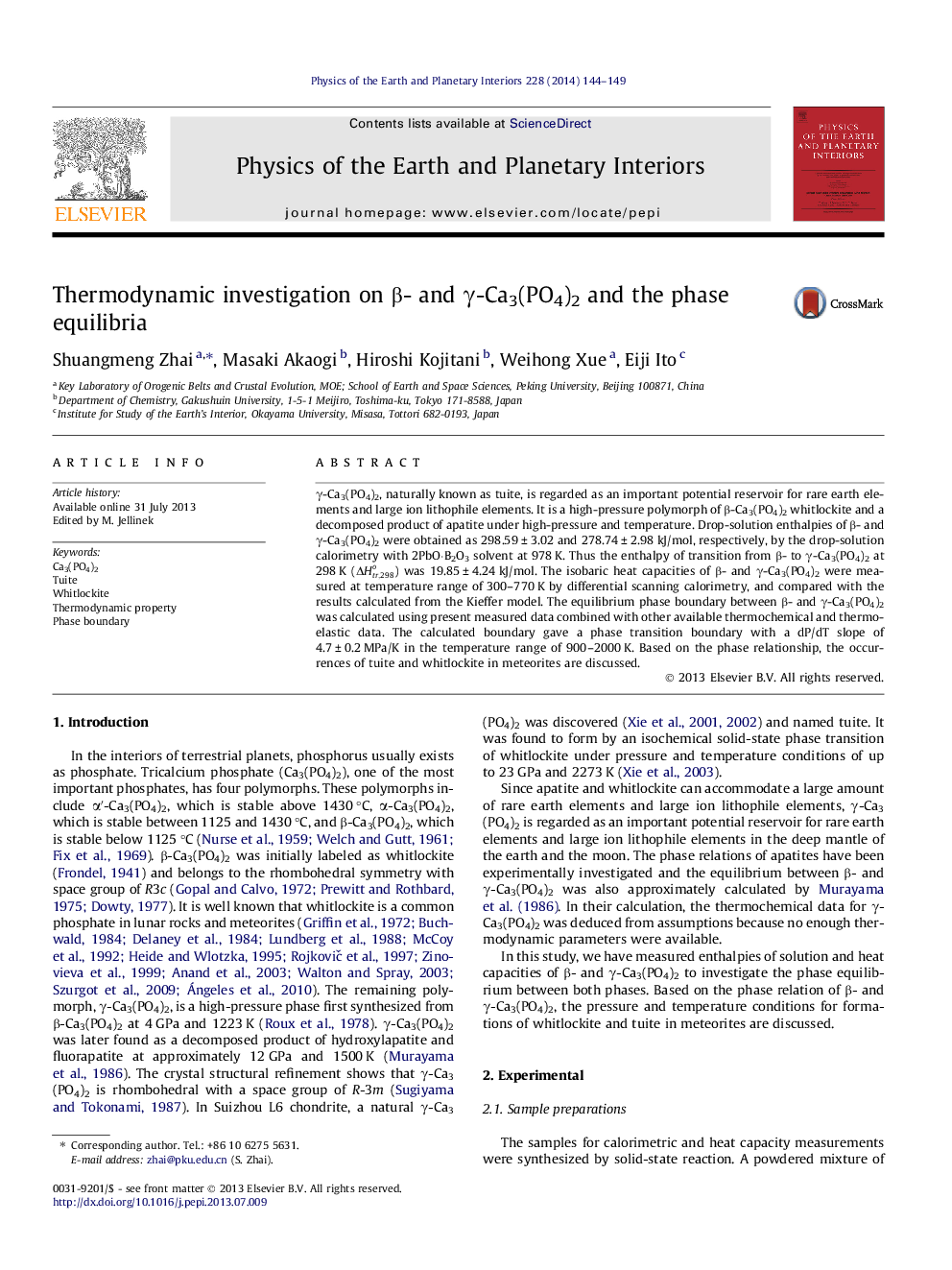| Article ID | Journal | Published Year | Pages | File Type |
|---|---|---|---|---|
| 4741586 | Physics of the Earth and Planetary Interiors | 2014 | 6 Pages |
•Drop-solution enthalpies and heat capacities of β- and γ-Ca3(PO4)2 were measured.•The formation enthalpy of γ-Ca3(PO4)2 from β-Ca3(PO4)2 was determined.•The phase boundary between β- and γ-Ca3(PO4)2 was calculated thermodynamically.•The calculated boundary is used to discuss the formations of tuite and whitlockite in meteorites.
γ-Ca3(PO4)2, naturally known as tuite, is regarded as an important potential reservoir for rare earth elements and large ion lithophile elements. It is a high-pressure polymorph of β-Ca3(PO4)2 whitlockite and a decomposed product of apatite under high-pressure and temperature. Drop-solution enthalpies of β- and γ-Ca3(PO4)2 were obtained as 298.59 ± 3.02 and 278.74 ± 2.98 kJ/mol, respectively, by the drop-solution calorimetry with 2PbO·B2O3 solvent at 978 K. Thus the enthalpy of transition from β- to γ-Ca3(PO4)2 at 298 K (ΔHtr,298o) was 19.85 ± 4.24 kJ/mol. The isobaric heat capacities of β- and γ-Ca3(PO4)2 were measured at temperature range of 300–770 K by differential scanning calorimetry, and compared with the results calculated from the Kieffer model. The equilibrium phase boundary between β- and γ-Ca3(PO4)2 was calculated using present measured data combined with other available thermochemical and thermoelastic data. The calculated boundary gave a phase transition boundary with a dP/dT slope of 4.7 ± 0.2 MPa/K in the temperature range of 900–2000 K. Based on the phase relationship, the occurrences of tuite and whitlockite in meteorites are discussed.
